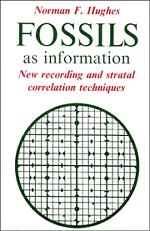Book contents
- Frontmatter
- Contents
- Preface
- Part A Problem of effectiveness
- Part B Proposed solution
- Part C Applications for information-handling
- 9 Earth and biologic evolution
- 10 Proposed new Period Classification of fossils of past organisms
- 11 Paleoenvironment investigation
- 12 General stratigraphic procedures
- 13 Limitations of the use of zones
- 14 Event-Correlation
- Part D Further considerations
- Appendices 1 and 2: Worked examples of GOR and PTR forms
- Glossary
- References
- Index
10 - Proposed new Period Classification of fossils of past organisms
Published online by Cambridge University Press: 02 February 2010
- Frontmatter
- Contents
- Preface
- Part A Problem of effectiveness
- Part B Proposed solution
- Part C Applications for information-handling
- 9 Earth and biologic evolution
- 10 Proposed new Period Classification of fossils of past organisms
- 11 Paleoenvironment investigation
- 12 General stratigraphic procedures
- 13 Limitations of the use of zones
- 14 Event-Correlation
- Part D Further considerations
- Appendices 1 and 2: Worked examples of GOR and PTR forms
- Glossary
- References
- Index
Summary
Scope of a classification. It has frequently been pointed out that a classification of any items may be successfully built to serve almost any one purpose, but that satisfactory extension to meet some further aim not originally included in the plan is always very difficult. Despite this, there remains a widespread belief among paleontologists in a possibility (just ahead) of perfecting an improved specially potent multipurpose classification for past and present organisms, which would also reflect phylogenetic history. This belief is unrealistic if it is based on any extension into the past of a classification designed for living organisms.
Tradition and confused current practice. Current classification of many but by no means all fossils consists of an extension into all relevant past time of a hierarchic scheme of families, orders and classes already employed with apparent success for extant organisms. With such a scheme some parts of it will be found to work at an adequate level for everyday practical purposes such as the simple filing of observations on fossils, and these successes will frequently be quoted in support of the whole classification as being suitable for phylogenetic interpretation. In sectors, however, in which numbers of species are high, the manifest overall lack of such success has led to numerous attempts at statistical improvement or more recently to cladistic manipulation. Examples of such activity following failure are in the groups of the angiosperms, the eusporangiate ferns, the bivalve molluscs and the insects, in all of which for various reasons patterns of descent are far from clear.
- Type
- Chapter
- Information
- Fossils as InformationNew Recording and Stratal Correlation Techniques, pp. 60 - 68Publisher: Cambridge University PressPrint publication year: 1989



